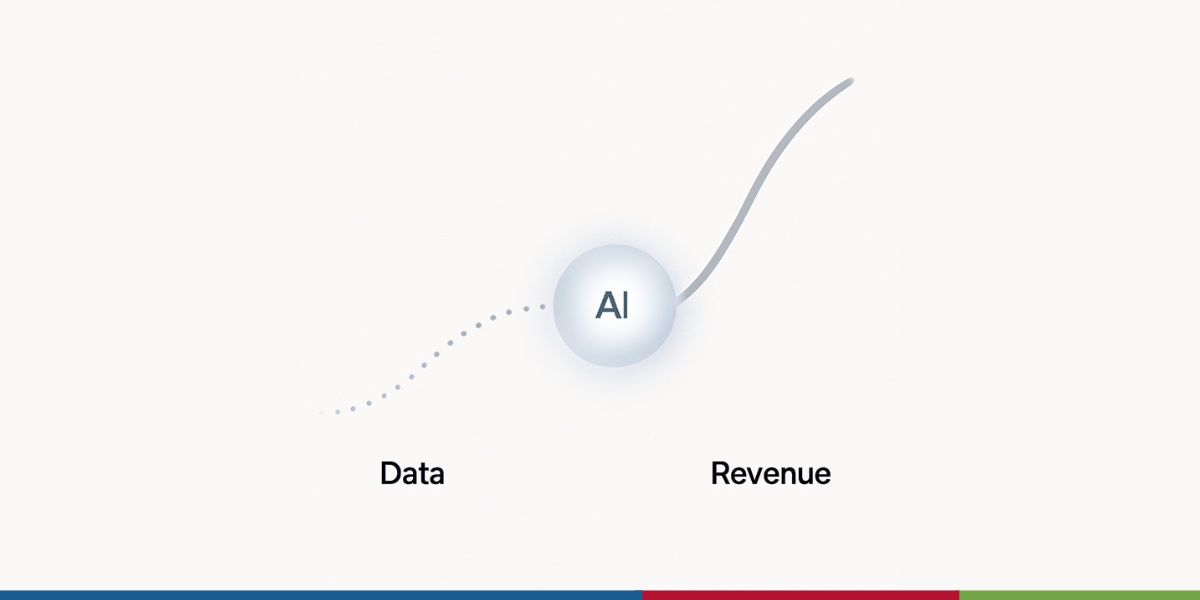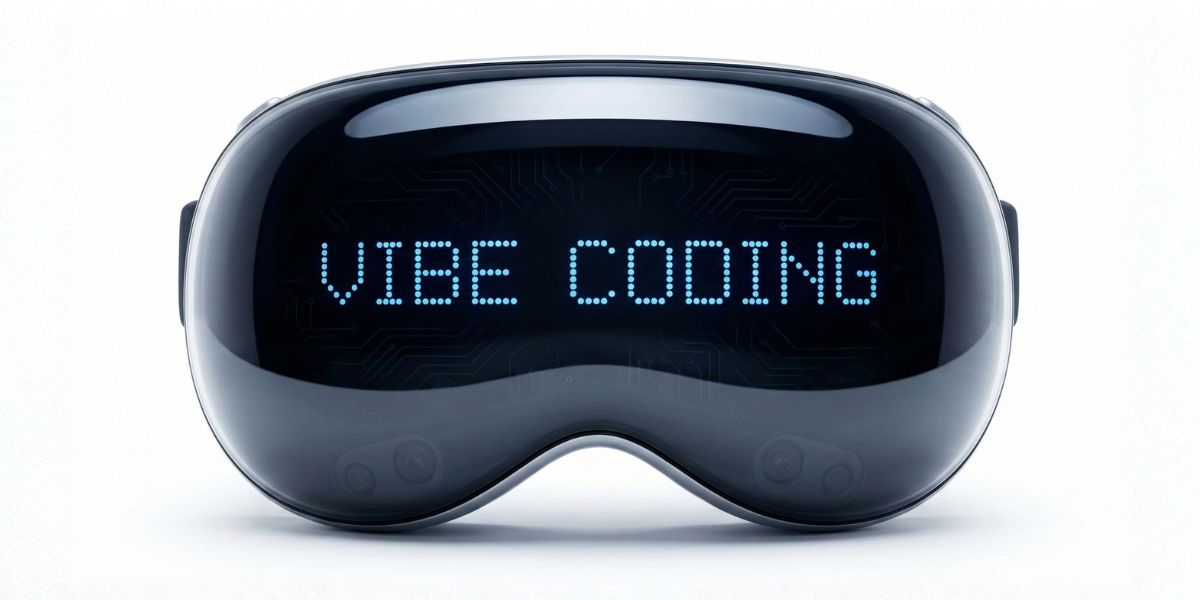Building the Decentralized Future: A Guide to Web3 dApp Development
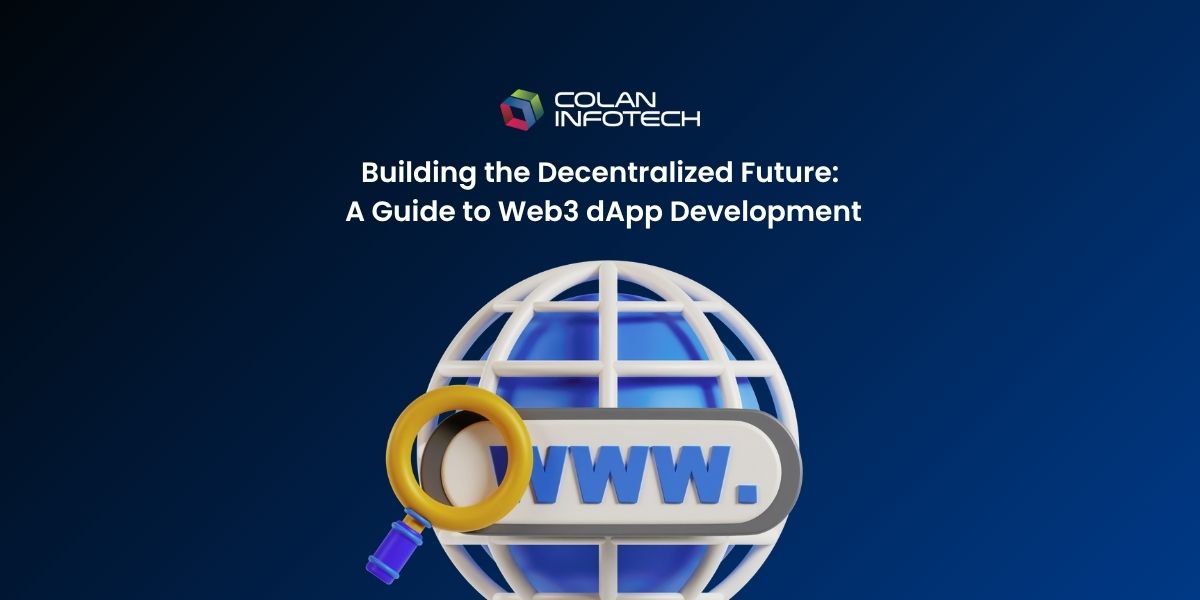
4 min read | By Admin | 11 August 2025 |
The $33.53B Web3 market by 2030 will be driven by blockchain, AI, gaming, and DeFi despite adoption hurdles and regulatory challenges.
Source: Grandviewresearch
Web3 is a comprehensive rethink of how the internet should operate. Since users demand ownership of their data and digital lives, the decentralized web (dApps) has been promoting openness, trust, and transparency on the web. Working on blockchain technology, these dApps are creating industrial revolutions-from finance to gaming-and communities. This blog is a concise version of what Web3 dApp development entails, along with an overview of tools, Web3 frameworks, and best practices for decentralized applications.
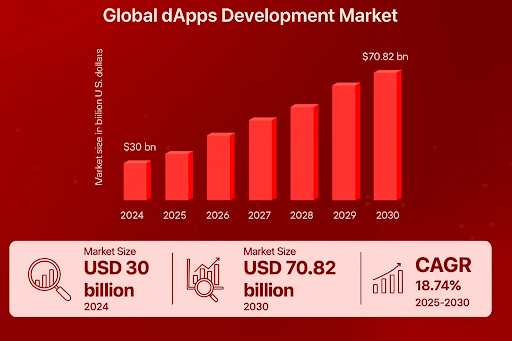
Source: Euphoriaxr
What is Web3?
Web3, being an abbreviation of “Web 3.0,” means the next evolution of the internet that bears decentralization, user ownership, and blockchain applications. In Web 2, being the realm dominated by major tech companies, platforms, and data, Web3 puts back into the hands of people so that an individual controlling offers greater weightage in the identification system in their own computer or on the Internet, assets, and digital interactions.
Web3 allows peer-to-peer networks, which do not need any central intermediaries. This occurs through the use of smart contracts and dApps, operating on blockchain networks such as Ethereum. In Web3, there is a way to acquire ownership of digital assets (like NFTs or tokenization), take part in DeFi, and interact in online communities that are governed by code and not corporations.
Key Components of Web3 dApp Development
Developing decentralized applications on Web3 platforms implies the use of various elements working together in concert to create decentralization, transparency, and user ownership. Here are some of the key corresponding elements:
Blockchain Network
This layer acts as the foundational infrastructure. It records transactions, runs the smart contracts, and guarantees transparency and un-centralization. The most popular include Ethereum, Polygon, and Solana.
Smart Contracts
Self-executing codes on blockchains carry out the whole application’s logic concerning token transfer, user actions, and blockchain for business rules without the need for centralized servers.
Wallet Integration
With this, users link with crypto wallets such as MetaMask in the dApp; they can then manage identities securely, approve transactions, and communicate with smart contract development.
Web3 Libraries
These two libraries act as the interlink between front-end and blockchain, so developers are able to fetch blockchain data, send their transactions, or invoke their smart contract functions.
Front-End Interface
The user interface, which sits atop modern web frameworks like React or Vue, allows users to interface with the dApp. It should be intuitive and able to communicate with blockchain components in a secure fashion.
Decentralized Storage
Services such as IPFS or Arweave offer off-chain storage for files (e.g., images, metadata) as a way to uphold true decentralization according to Web3 ethics-which holds that anything needs to be open and resistant to censorship.
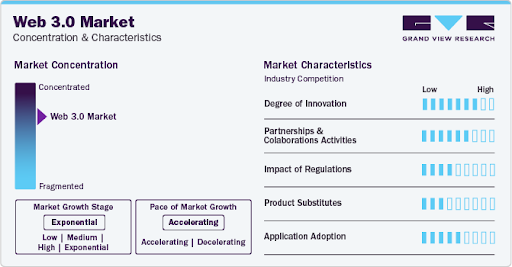
Source: Grandviewresearch
Best Practices for Web3 Development
In the Web3 paradigm, a precise, transparent, and technically strong implementation is necessary. Following the listed best practices will make the App secure, scalable, and ready for an ultimate pitch.
Secure Contract Development
Insecurity is an anathema in Web3. So, the best auditing libraries should be used in checking the code, and automated tests should be run on the code. Smart contracts are basically immutable; any mistake cannot simply be patched out.
Design for Upgradability
While contracts are permanent, upgradeable patterns like proxy contracts allow updates and bug fixes. Modular Web3 architecture makes dApp more adaptable over time.
Optimize for Gas Efficiency
High gas costs can drive users away. Minimize storage writes, reduce complex operations, and refactor code for better on-chain efficiency.
User Experience
The UX for Web3 is still a work in progress. Integrate wallets with a clear set of instructions and onboarding flows that do not overwhelm the user. Meta-transactions could hide complexity.
Ensure Interoperability
Using a widely adopted standard such as ERC-20 or ERC-721 garners increased visibility and applications as it allows the application to remain composable with other applications in the ecosystem.
Follow Ethical Standards
Stay updated with compliance requirements. Be mindful of how dApp handles user data, tokens, and financial flows. Ethical design earns long-term trust.
The Evolution and Future of Web3 dApps
Web3 dApps have formed from blockchain trials into actual platforms that are reshaping our online interactions. It began with decentralized finance (DeFi), and now all the other sectors are enveloped, such as gaming, identity verification, supply chains, and health care. Web3 dApps give users control over their data and digital ownership with complete transparency on the internet evolution, which is different from those traditional applications that rely on central servers.
As the manifestations of these services become clear, the focus all shifts toward increasing their scalability, enhancing their user experience, and interoperation. Developers have been hard at work promoting a Layer 2 landscape, sharding, and cross-chain compatibility to eliminate barriers placed by hefty fees and glacial transaction speeds. Still, work continues to design simple interfaces that make dApps usable for those who don’t even know what blockchain is.
The Web3 dApps’ future will be governed by smarter automation, enhanced privacy controls, and personalization. Powered by AI and powered by decentralized infrastructure innovations, these apps will provide not only secure and transparent but also seamless and smart experiences.
Conclusion
Web3 and dApps note how user data and assets are controlled. Careful development of trustworthy and usable dApps based on the blockchain and smart contracts enhances the internet brand as a free and transparent, open space for transactions. With this new-age dawn, embrace, learn, and add to the decentralized future one block at a time.
Most frequently asked questions
A dApps, or decentralized operations, run on blockchain networks rather of centralized waiters, allowing peer-to-peer relations.
To make a dApp, choose a blockchain, write smart contracts using reliability, set up a frontend with Web3.js and emplace it using tools like Truffle or Hardhat.
Web3 apps offer lesser translucency, stronger power of data, reduced reliance on interposers and enhanced security through decentralized structure.
Smart contracts are tone-executing programs on a blockchain that run when predefined conditions are met, enabling unsure and automated deals.
Common tools include reliability, Truffle and Hardhat, Web3.js or Ethers.js, and Metamask.
The latest from our editors
Join over 150,000+ subscribers who get our best digital insights, strategies and tips delivered straight to their inbox.
